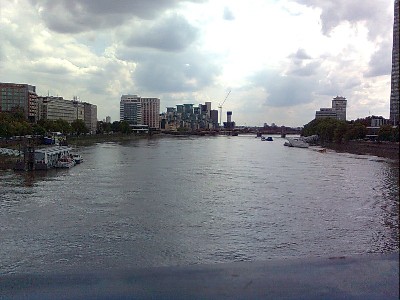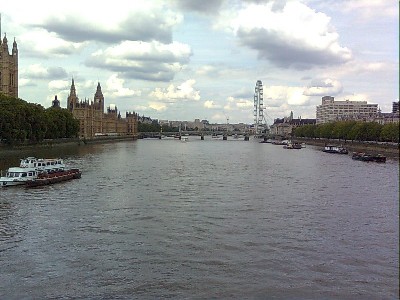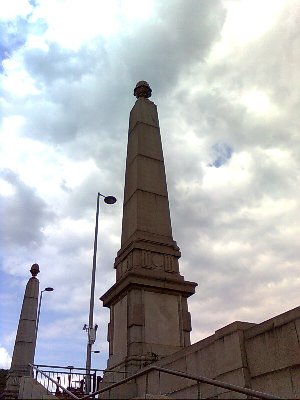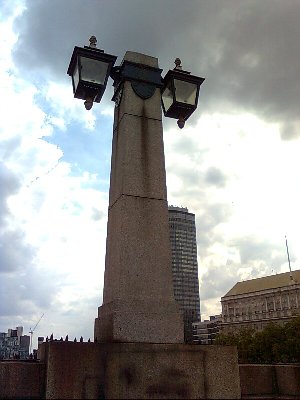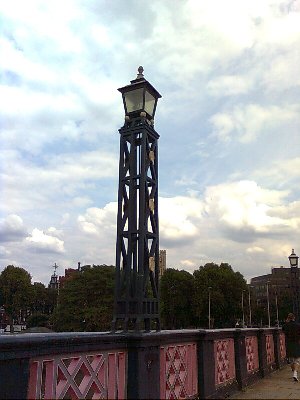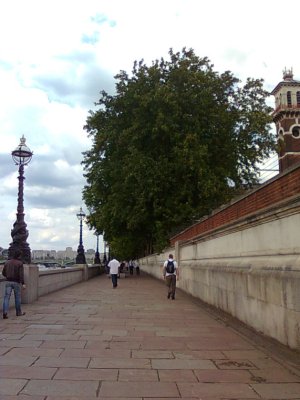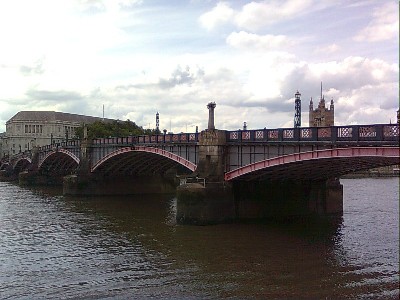
Lambeth Bridge was built on the site of a horse ferry owned by the Archbishop of Canterbury whose London home was the nearby Lambeth Palace. The ferry was not particularly safe and in 1633 Archbishop Laud lost most of his possessions in the river when the ferry sank while he was moving his possessions into the palace. The horse ferry closed in 1750 when the first bridge opened. The ferry is today commemorated in the street name Horseferry Road. A new suspension bridge opened on the site in 1862 but it was not long before problems became apparent and it was rumoured to be unsafe. When it was inspected in 1887, the anchorages were found to be failing and repair work was carried out. Over the next few decades various weight limits and safety measures were instituted until, in 1929, the bridge was demolished. The new bridge of five segmental steel arches with piers and abutments clad in Cornish granite was opened in 1932. The balustrade is of cast iron, and sitting on it between the piers are two unusual cast iron lattice work lamps. Above each pier are the carved London County Council coat of arms flanked by dolphins, and above them are Art Deco lamp standards in the form of obelisks, mirroring the pairs of larger obelisks at each end of the bridge. The red colour scheme of the bridge is intended to reflect the red seats of the nearby House of Lords and as we shall see, Westminster Bridge is predominantly painted green representing the seats of the House of Commons. |
